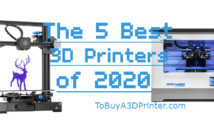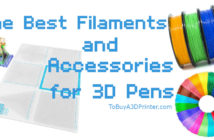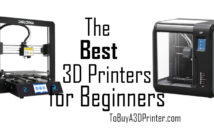Desktop 3D printers for homes are growing in popularity for home hobbyists and makers. Each rendition of a 3D printer improves on the design, usability and functionality for home projects and today’s 3D printers are a fun investment. If you know what features you are looking for, and what your budget is, you should be able to buy a great 3D printer and be creating at home in very little time.
If you are looking to buy your first 3D printer, here are some questions you can ask yourself to make sure you get one that you really enjoy using:
-
Do you want to build your 3D printer or buy one assembled?
-
What materials do you want to print?
-
What print quality do you require?
-
What software do you know or what can you learn to use?

There are 3D printer kits that can be purchased so you or your tech savvy gift recipient can build their own 3D printer. Along with these kits, some 3D printers use open source design so you have access to all the specs and can modify your printer to perform the way you want. The community and forums surrounding building and modifying 3D printers are great resources and worth looking at if you want to build a machine yourself.
If you want to purchase a pre-made 3D printer that is ready-to-go right out of the box, you may not have access to improve on the functionality or lend your own design elements. However, you will be up and printing almost right away and can start working on whatever project you had in mind.
Some people prefer a hybrid where they are able to get a fully assembled printer, but access open source files for modifications as well. This is worth exploring if you are interested in diving in to both worlds.

Most commonly, 3D printers use two different kinds of plastics in order to create. These plastics are heated in the 3D printer and extruded onto the platform layer by layer as your object is printed. Both types of plastics come in a variety of colors, but their capabilities are very different.
PLA or Poly Lactic Acid plastic is a good choice for beginners and small projects. It is biodegradable, made out of corn starch, and cools quickly. However, it not ideal if your project requires interlocking parts and it can also melt at high temperatures, which may limit the uses of your creation.
ABS or Acrylonitrile Butadiene Styrene plastic is petroleum-based, which makes it less environmentally friendly and also causes it to emit fumes when it is being heated and used for printing. It takes longer to cool, but can be used for more intricate projects because it is more flexible than PLA.
Innovations in 3D printing technology are making it possible to print with non-plastic materials as well, though it isn’t as widespread of an option just yet. Keep your eye out for wood, metal and even food filaments in the near future!

One of the big things that determines the quality of 3D printed items is the print speed, which is controlled by the movement of the extruder. If you need a higher quality or higher resolution when it comes to your final product, this will affect your 3D printer choice at purchase. Look for images of items that have been printed using the printer you are considering to see how they look and how much detail they offer.
When it comes to 3D printing output, you are going to get closest to your intended object by using the printer that is made for the level of detail that you need and that uses the right type of material.

3D printing software for home printers is tailored to the type of individual and project that is going to be created. Some printers come with an easy-to-use software program pre-loaded with 100s of items that can be printed while others require CAD programs and separate slicing software. It is very important before purchasing your 3D printer that you know what the software requirements are for your machine and are able to use the programs or are willing to learn the programs in order to produce your objects. Of course you can also choose object from an assortment of 3D printer model sharing sites like Thingiverse.
Buying a 3D Printer
Answering the above questions will help you determine which 3D printer to purchase for your home. They are fun, versatile and great for both experienced makers and those just breaking into the scene. Keep an eye out for interesting innovations and improvements that can help make your 3D printer even better. There is still a lot of possibility in the 3D printing world!



